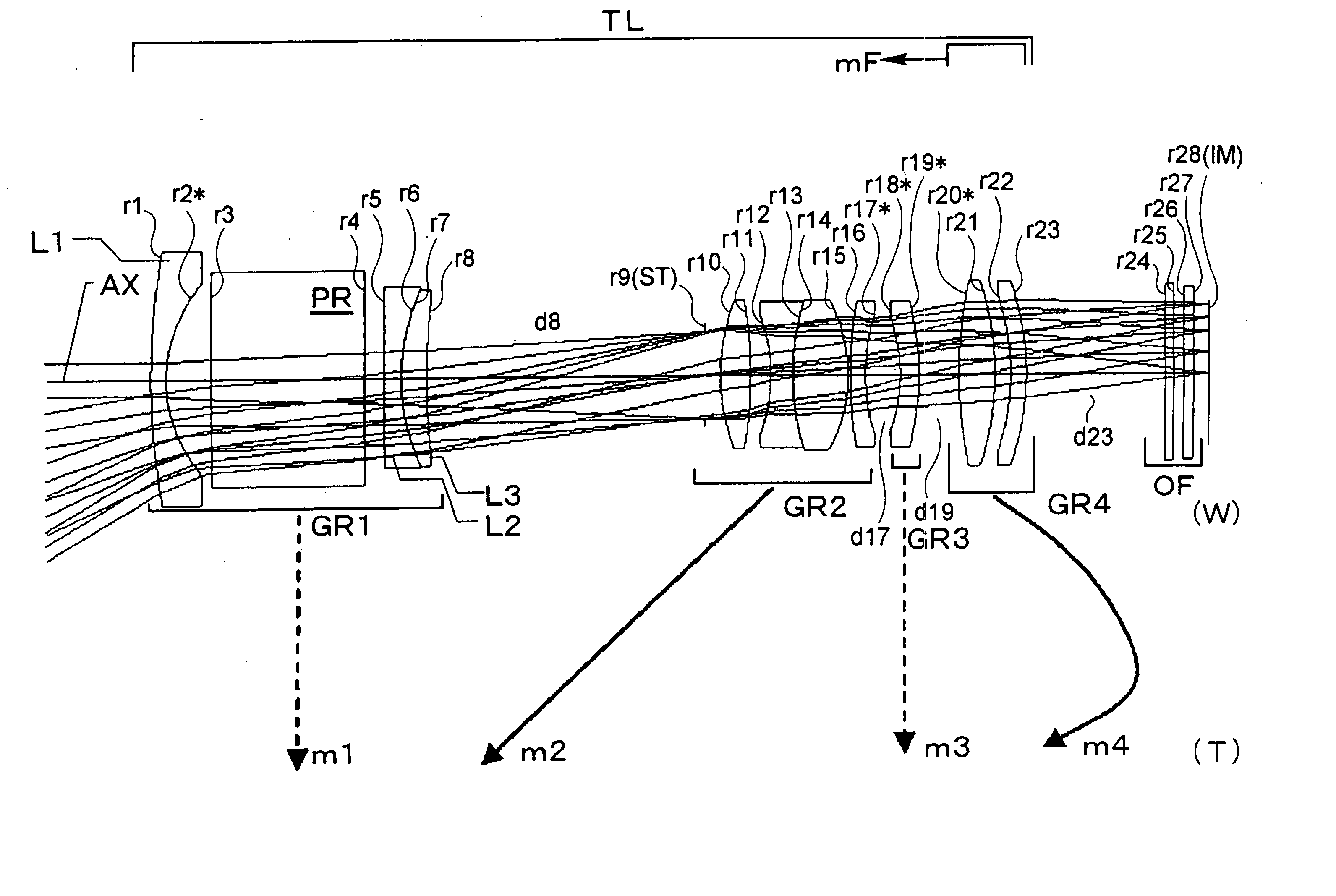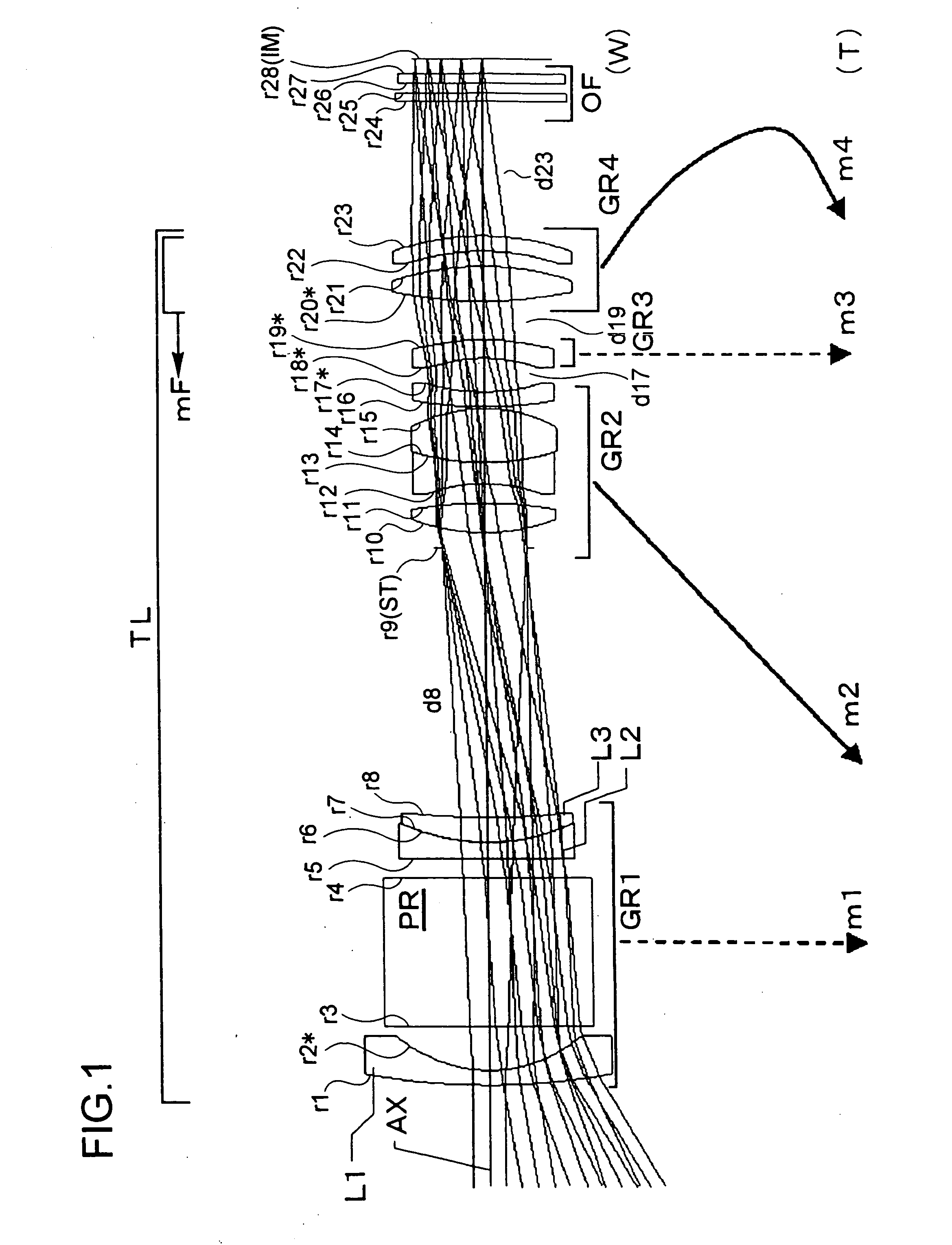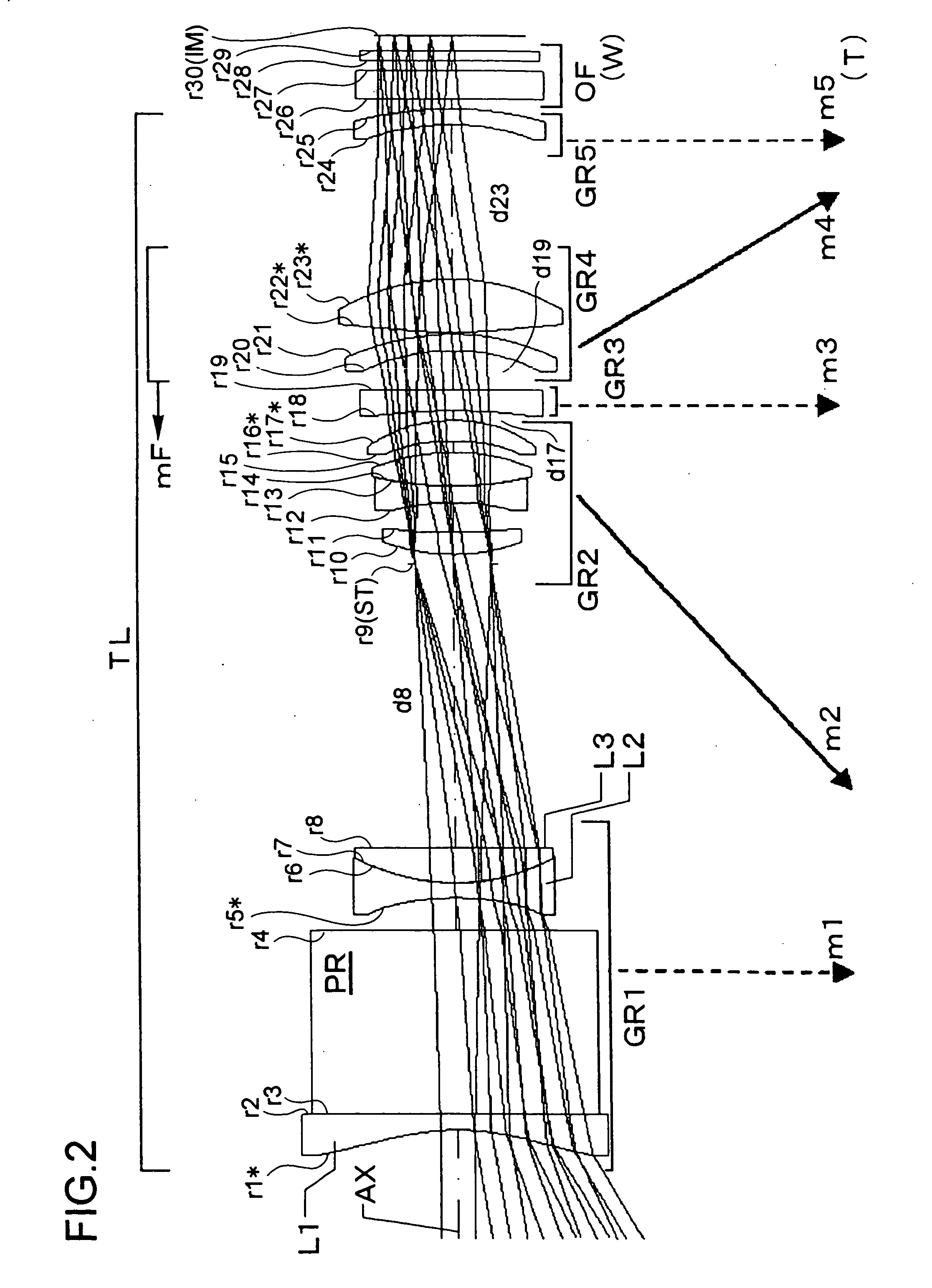Image-taking lens apparatus
a technology of image-taking lens and lens body, which is applied in the field of image-taking lens body, can solve the problems of inability to make the thickness of the image-taking lens body smaller than the sum, inability to make the digital camera satisfactorily compact, etc., and achieves the effect of shortening the physical axial distance of the object light, high optical performance, and high refractive index of the prism
- Summary
- Abstract
- Description
- Claims
- Application Information
AI Technical Summary
Benefits of technology
Problems solved by technology
Method used
Image
Examples
examples
[0115] Hereinafter, the construction and other features of practical examples of the zoom lens system used in an image-taking lens apparatus embodying the present invention will be presented with reference to their construction data and other data. Examples 1 to 5 presented below are numerical examples corresponding to the first to fifth embodiments, respectively, described hereinbefore, and therefore the optical construction diagrams (FIGS. 1 to 10) of the first to fifth embodiments also show the lens construction of Examples 1 to 5, respectively.
[0116] Tables 1 to 10 show the construction data of Examples 1 to 5. Table 11 shows the values of the conditional formulae and the data related thereto as actually observed in each example. In Tables 1, 3, 5, 7, and 9, λ0 represents the design wavelength (in nm), Y′max represents the maximum image height on the light-receiving surface SS of the image sensor SR (corresponding to the distance from the optical axis AX, in mm), and f and Fno ...
PUM
 Login to View More
Login to View More Abstract
Description
Claims
Application Information
 Login to View More
Login to View More - R&D
- Intellectual Property
- Life Sciences
- Materials
- Tech Scout
- Unparalleled Data Quality
- Higher Quality Content
- 60% Fewer Hallucinations
Browse by: Latest US Patents, China's latest patents, Technical Efficacy Thesaurus, Application Domain, Technology Topic, Popular Technical Reports.
© 2025 PatSnap. All rights reserved.Legal|Privacy policy|Modern Slavery Act Transparency Statement|Sitemap|About US| Contact US: help@patsnap.com



